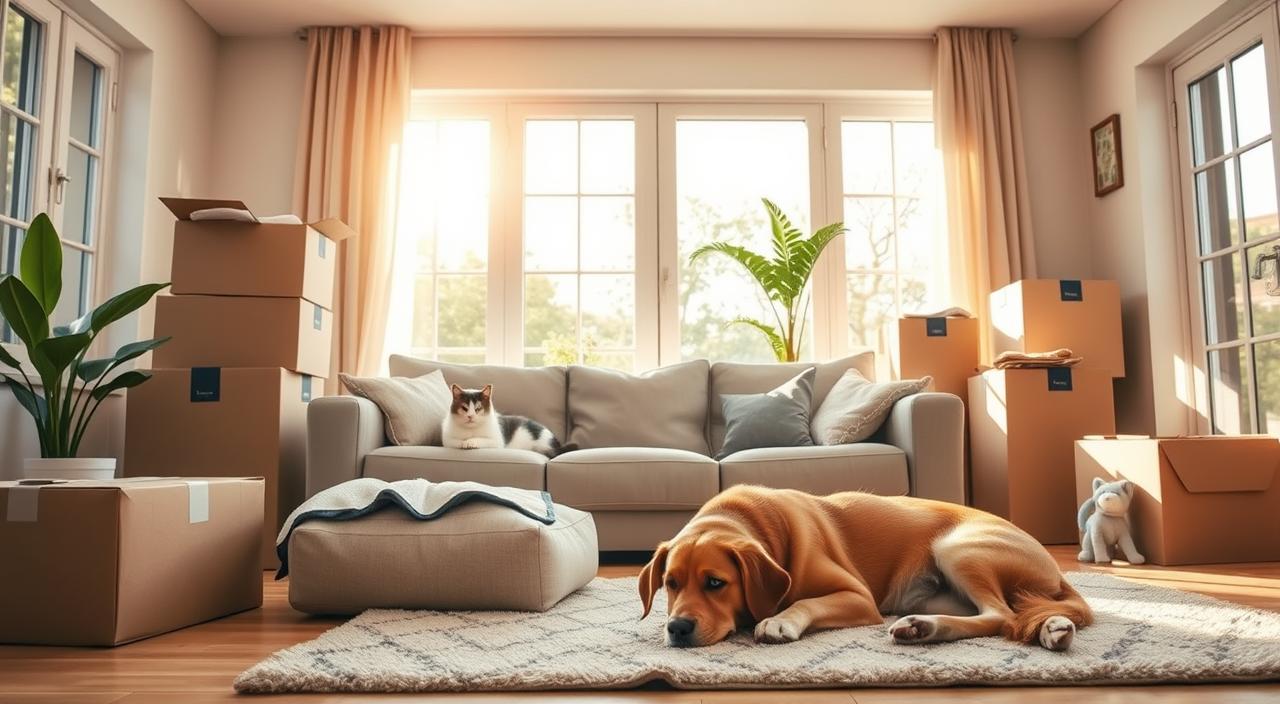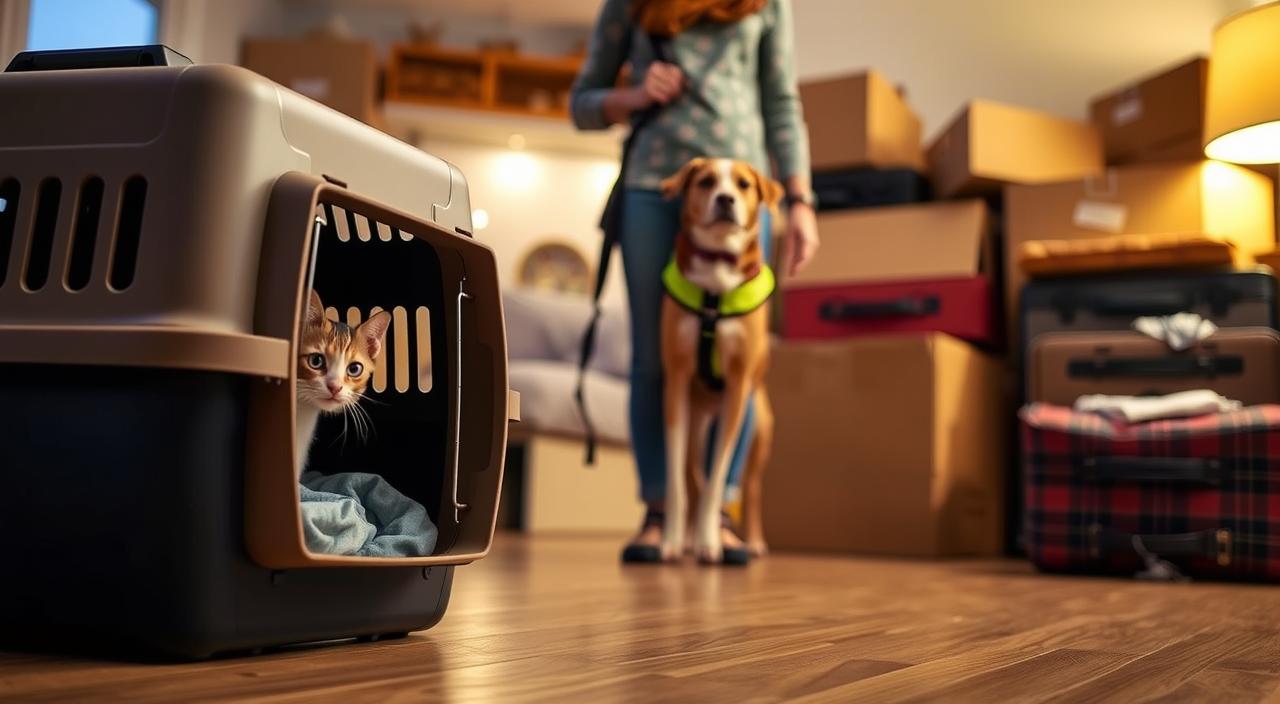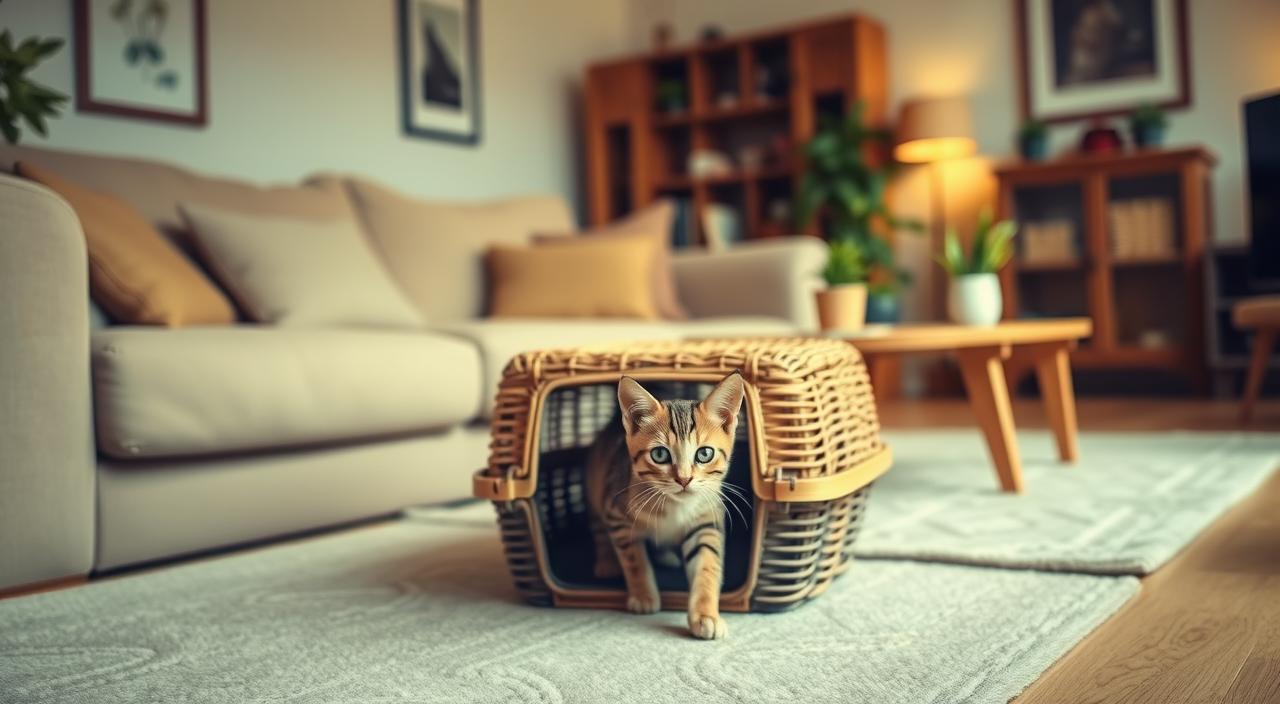Relocating is one of life’s most demanding transitions — and for pets, it’s even more disorienting. Cats and dogs don’t understand why their familiar world is suddenly full of boxes, strangers, and strange smells. This guide explores expert-approved moving house with pets tips to make the process calmer, safer, and more organised for everyone in the family.

Animals sense your emotions and environment. If you’re anxious, they’ll feel it too. A calm, structured approach not only helps your four-legged companions but also gives you greater control throughout the move. From preparation to settling in, every small step matters when it comes to creating a stress-free transition.
🐕 Key Takeaways
- Moving is confusing for animals who can’t grasp what’s happening around them.
- Cats and dogs respond differently to environmental change and require tailored care.
- Your calm attitude provides reassurance that helps pets feel secure.
- Planning ahead reduces anxiety, risk of escape, and potential health issues.
- Familiar scents, routines, and safe spaces help pets settle into their new home.
Preparing for the Move: Calm Foundations for a Smooth Transition
Successful moves with pets begin long before removal day. Building a sense of security through routine and familiarity helps prevent stress and behavioural problems later.
🏠 Create a Dedicated Pet Space Before Moving Day
Choose one room in your current home as a “safe zone.” Clear away boxes and leave only your pet’s essentials: bedding, toys, food and water bowls, and litter trays (for cats). This dedicated area gives them consistency while the rest of the house becomes more chaotic.
For dogs, select a room with easy access to a secure outdoor area for regular toilet breaks. Visit this space frequently with your pet so it becomes a source of calm. On moving day, keeping them in this familiar room helps them feel protected amidst the commotion.
🐾 Arrange Alternative Care if Necessary
Some animals struggle more than others. For anxious or elderly pets, consider arranging temporary care with a friend, relative, or trusted boarding service. This keeps them away from noise, movers, and unfamiliar faces.
Before the move:
- Update microchip and ID details.
- Register with a new vet near your new address.
- Prepare a travel kit with essentials: food, water, medication, and cleaning wipes.
Inform your removals team where your pets are located to avoid accidental escapes or distress.
Moving Day: Safety, Routine, and Reassurance

The big day is often the most stressful moment for pets. Preparation and consistency can transform it into a calm experience.
🚗 Ensure Safe and Comfortable Travel
Whether you’re moving across London or to a new city, prioritise safety and comfort during transport. Use a secure travel carrier or approved pet harness.
| Travel Tips | Cats | Dogs |
|---|---|---|
| Before the trip | Feed lightly; avoid meals 3–4 hours before | Light snack only; walk before departure |
| Car restraint | Use a ventilated crate; cover partially to reduce stress | Secure with harness or crate |
| Breaks | Keep in carrier; don’t open doors in unfamiliar places | Offer water and toilet stops |
| Comfort item | Blanket with home scent | Favourite toy or your worn t-shirt |
Avoid feeding immediately before travel to prevent sickness. Play gentle music or use a pheromone spray to help them stay calm.
🕰 Maintain Familiar Routines
Routine provides comfort. Stick as closely as possible to normal feeding and walking schedules. Set aside time to reassure your pet with calm, positive attention.
Key moving-day actions include:
- Keep your pet in a closed, labelled room until departure.
- Check windows and doors are secure before releasing them.
- Provide fresh water frequently.
- Use pheromone diffusers (Feliway for cats, Adaptil for dogs) to reduce stress.
A long walk before setting off helps dogs expend energy and travel more peacefully.
Settling Into the New Home: Creating Security and Confidence

Arriving at a new property can overwhelm pets. Strange smells, unfamiliar rooms, and new sounds can trigger anxiety. Gradual familiarisation works best.
🛋 Set Up a Secure & Familiar Base Room
Before unpacking everything else, prepare your pet’s comfort zone. Choose a quiet room away from foot traffic, and unpack their belongings first.
| Essentials | Cats | Dogs |
|---|---|---|
| Bedding | Favourite blanket, scratching post | Own bed or blanket |
| Feeding area | Quiet corner with bowls | Designated feeding station |
| Litter/toilet area | Hidden corner with tray | Access to garden or lead walks |
| Safety | Closed windows and hideaways | Blocked exits and safe zone |
Allow your pet to stay in this space for the first 24–48 hours. The familiar scents will make them feel safe while you unpack other rooms.
🐈 Gradual Exploration
Dogs are often curious and can explore more quickly. Let them roam under supervision once major boxes are cleared. Cats, however, are territorial and may need several days — or weeks — before venturing further.
Before allowing access to gardens or balconies:
- Secure fences and gates.
- Keep cats indoors for at least 3 weeks.
- Walk dogs on a lead until they recognise their surroundings.
Maintain consistent feeding times, water availability, and daily play sessions to establish a sense of normality.
Managing Anxiety and Travel Sickness
Some pets experience motion sickness or anxiety even after arriving. Prevention and early support make a big difference.
- Consult your vet about anti-nausea medication if your pet is prone to sickness.
- Keep feeding schedules consistent and avoid large meals before travel.
- Offer plenty of water, especially in warm weather.
- Reward calm behaviour with praise and treats.
Administrative & Health Essentials
A successful move isn’t just about comfort — it’s also about keeping records updated and safety ensured.
📋 Update Microchip, Vet, and Insurance Details
If your pet becomes lost in the unfamiliar area, accurate microchip details are vital. Update your information with your new address immediately after the move.
For dog owners, UK law requires an ID tag showing your contact number and postcode. Notify your insurance provider and register your pet with a new local vet as soon as possible.
💡 Tip: Use the RSPCA’s pet care guide for reliable resources on pet welfare and relocation readiness.
Eco-Friendly Clear-Out Before Moving
Before you move, take the opportunity to declutter responsibly. Donate unwanted furniture or recycle large household items to avoid unnecessary waste.
If you need help clearing bulky items before relocation, professional clearance services can handle the task efficiently. For example, the house clearance services in London provided by RubbishMan ensure eco-friendly disposal, allowing you to focus on preparing your pets for the move.
Behavioural Adjustment: Helping Pets Feel at Home
The first few weeks in a new space are crucial. Your pet may display clinginess, vocalisation, or even minor accidents indoors — all normal responses to change.
Provide reassurance, maintain structure, and resist punishment. Reward calm and confident behaviour. Spend extra time playing, walking, and bonding to rebuild trust and comfort in the new environment.
If your cat hides or your dog paces nervously, give them time. Familiar scents (like an unwashed blanket) help enormously.
Professional Help and Long-Term Settling
If your animal shows ongoing stress or behavioural issues, consult your vet or an accredited behaviourist. They can recommend training methods or calming aids.
Look for local dog parks and walking routes to build new routines. For cats, provide vertical spaces like shelves or cat trees for added security.
Reintroduce grooming sessions, playtime, and regular vet check-ups. These rituals remind your pet that life is back to normal — just in a new location.
Conclusion
A well-organised plan transforms relocation from a stressful ordeal into a smooth adventure for you and your pets. Preparation, calm communication, and patience are your best allies.
From establishing safe zones and updating vet records to keeping routines consistent, every action helps your animals adapt confidently to their new surroundings.
Remember, familiarity is your greatest tool. By following these moving house with pets tips, you ensure your furry family members settle in happily — ready to explore their new home with wagging tails and gentle purrs.





